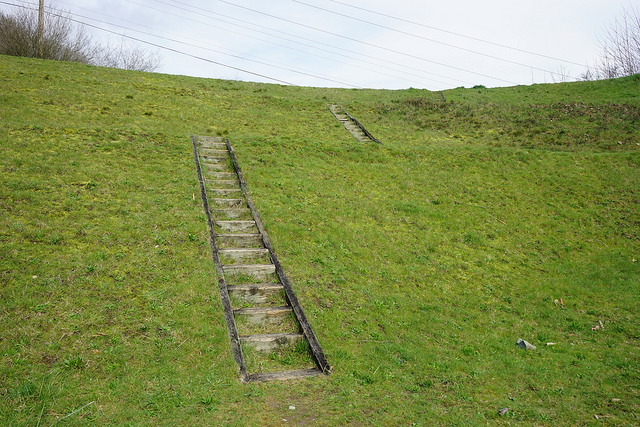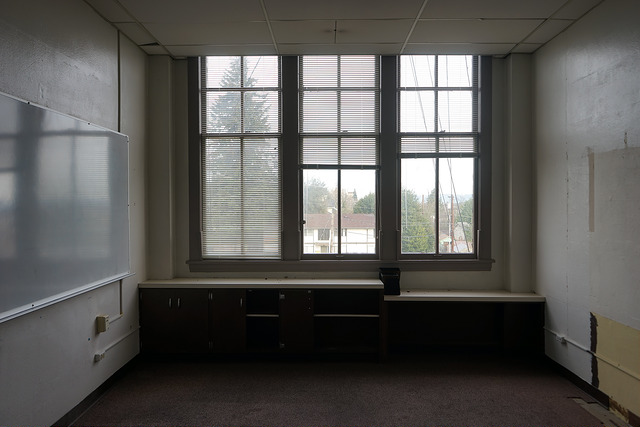Built in 1911, the Longfellow School has a one hundred year legacy serving as both a school and as administrative offices for the Everett School District. Following construction of a new Community Resource Center in 2013, the District effectively retired Longfellow School, leaving it to serve a non-essential storage function. The District issued a request for letters of interest for the property and indicated a preference that the exterior of the building be preserved. The district has received several proposals that have included rehabilitation of the former school building, but they have all been considered not viable. Adding to the concern is the fact that the entire site is adjacent to the district-owned Memorial Stadium, which is used for a variety of school and community events. Advocates fear the perceived need for parking could trump a plan for rehabilitating the building. The Longfellow School site is large enough to accommodate new construction, an important element as the cost to rehabilitate the historic school may require a degree of new development to make the economics feasible.
A December 2016 Herald article about the impending demise of Longfellow prompted a miraculous donation of $3 Million to the Everett Museum of History to purchase the school for use as a museum. However, after several months of negotiations the deal fell through and the museum purchased a different property. In 2017 the Everett School District called for bids to demolish the Longfellow School and construct a parking lot. In July of 2018 the bids were put to vote by the school board. The lowest bid came in at $2.1 Million, about three times what they had estimated. This caused some hesitation, but in the end two directors voted in favor of accepting the bid and two voted against. A fifth director who supported the demolition had stepped down the previous week for health reasons. Only because of this the motion failed and the school received a stay of execution.
UPDATE!
In early February of 2019, Historic Everett learned of plans by the Everett School District to bring a contractor in to the Longfellow school to salvage lights, doors, handrails, cupboards, etc. for surplus. They were concerned this move would make the building less attractive to a future buyer and saw it as an attempt at a piecemeal demolition. They decided to raise awareness of the issue by staging a “heart bombing” on Friday March 1st. A heart bombing is a public display of affection for a historic place, where balloons, flowers, and large hearts with personal love notes are attached to a building. The event garnered the attention of the press in advance of the school board’s vote on the issue, including a story in the Sunday Herald by popular writer Julie Muhlstein. In addition, Historic Everett ran a full-color half-page ad calling on people to write to the board or attend the meeting.
On Tuesday, March 5th, a large number of people showed up at the school board meeting to support Longfellow, including eight who spoke in its defense. Some of the community members promoted the idea of forming a committee of district people and citizens to study the problem of how to use the building. During the meeting two board directors made dramatic statements coming out as supporters of preserving the school, disavowing themselves of their previous votes to accept bids for demolition. When the issue finally came up three hours into the meeting, a long and tense debate was had between board members. Two directors who were on the fence were eventually persuaded that the salvage did not urgently need to be performed right away. When the vote was taken, only one director voted in favor of approving the salvage contractor, and the motion failed. Community support played a major role in defeating the school district’s plan.
In the news:
July 10, 2019 – “Everett’s old Longfellow building beats wrecking ball for now”
June 15, 2018 – “Everett School District prepares to demolish 1911 Longfellow building”
March 20, 2019 – “Longfellow spared gut job by school board”
March 8, 2019 – “Why not use Longfellow building as a school?”
March 7, 2019 – “Editorial: Longfellow decision may only put off inevitable”
March 6, 2019 – “Group hoping to save doomed Longfellow Building”
March 3, 2019 – “A heartfelt plea to save Longfellow School”
July 5, 2018 – “Everett’s Longfellow building gets stay of execution”
February 7, 2018 – “Everett School District has had offers for Longfellow School”
November 1, 2017 – “Museum drops bid for historic Longfellow”
October 27, 2017 – “Everett History Museum ends bid for the Longfellow building”
June 29, 2017 – “Allow history museum to buy, save Longfellow School”
April 19th, 2017 – “Longfellow Building may be saved by offer”
March 29, 2017 – “Everett Longfellow offer helps Everett Museum”
March 24, 2017 – “Donor pledges $3M for history museum to buy Longfellow building”
December 28, 2016 – Editorial: Loss of landmark Longfellow School sad but inevitable
December 14, 2016 – Longfellow Elementary School destined to become parking lot
November 29, 2016 – Everett School’s Longfellow building slated for demolition
April 19, 2015 – No luck selling Everett School District’s historic Longfellow building
December 10, 2014 –
Everett District trying to sell lease century-old Longfellow building




























